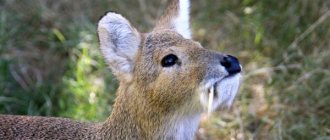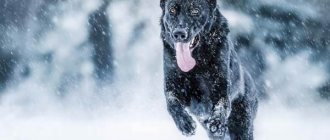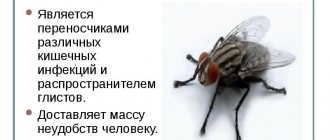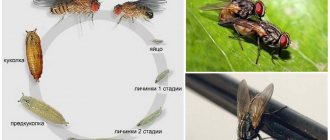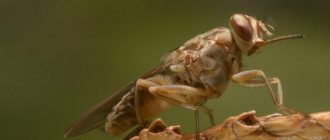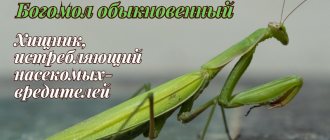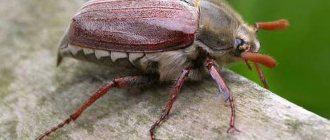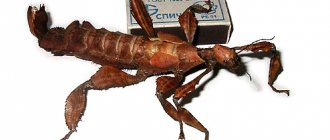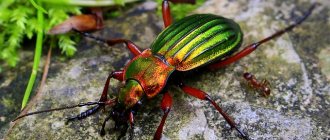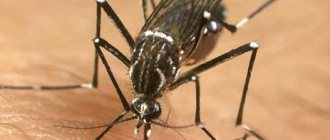The fly is the most familiar and most annoying insect for us, which attacks our homes in the warm season. This usually lasts from spring until late autumn. We are accustomed to seeing ordinary house flies and green flies, which we associate with dirt and infectious diseases. But in fact, we know very little about these insects. There are about 75 thousand different species of flies in the world, among which there are both those that bite and carry infection, and completely harmless creatures.
Many of us have only a negative image of a fly. As a rule, we associate it with a buzzing sound that gets on our nerves and unsanitary conditions. But it turns out that the fly is an integral element of the biosphere, without which our planet could not fully exist. Many animals feed on adult flies and their larvae. Some types of flies pollinate plants, while others participate in the process of decomposition of plant waste and eat caterpillars and bugs. If it were not for flies, our planet would have long been littered with various plant debris.
What kind of insect is this?
A fly is a two-winged insect belonging to the phylum of arthropods, the order of flies and mosquitoes. The insect's body length varies from a few millimeters to 2 cm, depending on the species.
The lifespan of flies is 1–2.5 months. One of the most important distinguishing features of the fly is its huge eyes, which consist of several thousand hexagonal lenses. Thanks to this structure of the eyes, the fly has very good vision and is able to see even what is happening from the side and behind, that is, it practically has a circular field of vision.
Nutrition
What do flies do and what can they eat? Very interesting, but they can be omnivores. That is why they have a high ability to feed on organic food.
If suddenly the food turns out to be too hard for them, they can soak it first. Particular preference will be given to liquid juice and liquid sweets.
Room
The fly belonging to this species practically no longer lives in the wild. Therefore, she is the most annoying and impudent guest in our homes in the summer-autumn period. At this time, our life is complicated by the constant struggle with these small, but very fast and resourceful insects.
House flies are most active during the daytime. The homeland of this insect is the steppe of Central Asia. But at the moment, its distribution is observed everywhere near human homes - both in rural areas and in cities.
A fly of this species is not a biting or blood-sucking insect, but nevertheless it causes significant harm to humans. Its limbs have tentacles on which various harmful bacteria and dirt accumulate, leading to infectious diseases.
The housefly's body is gray with brown tints. It consists of the abdomen, head and chest. The chest is connected to wings and three pairs of legs. On the head there are very large eyes, occupying almost the entire head, an oral cavity and short antennae. The upper part of the breast has four dark stripes, the belly has black spots in the form of quadrangles. The lower half of the head is yellow. The total body length of the fly usually does not exceed 8 mm. Males by size
There are fewer females.
The female has a wider frontal part of the head, and the distance between the eyes is greater than that of the male. The flight of a fly is carried out only with the help of two front membranous transparent wings, and the hind wings (haleteres) are necessary only to maintain balance.
In appearance, many types of flies are similar to the house fly, but its distinctive feature is the vein that forms a break in front of the edge of the wing. The limbs of the housefly are thin and long with suction cups for convenient movement on various surfaces. These suction cups allow her to move freely even on a vertical glass plane and on the ceiling. The fly's flight speed is very high, and it can last for several hours.
Nutrition
Despite the small antennae, the housefly has a keen sense of smell. She can smell the smell of food over long distances.
The fly feeds on everything that people eat, but prefers liquid food.
Its mouthparts are not capable of biting - they only have a licking-sucking function. To do this, the fly has a flexible proboscis on its head, with which it not only sucks liquid food, but also absorbs solid foods. The fact is that the fly secretes saliva, which dissolves solids.
Reproduction and development
The housefly's favorite place to lay eggs is in rotting, moist environments such as manure and various sewage. Having chosen a suitable place, the female lays from 70 to 120 white eggs, the length of which is about 1.2 mm. The transition stage from egg to larva, depending on environmental conditions, lasts for 8–50 hours. The larva is an elongated white body without limbs, similar to a small worm 10–13 mm long, with a pointed head. It continues to live in the feces of various farm animals (horses, chickens, cows).
After the larva has 3 molts, after 3–25 days, its shell hardens and separates from the body. Thus, it becomes a pupa and after 3 days turns into a young fly, which can produce offspring within 36 hours. The average lifespan of a house fly is 0.5–1 month, but sometimes, under particularly favorable conditions, it can live up to two months. A female can lay eggs up to 15 times throughout her life. Depending on the air temperature and other climatic factors, the total number of offspring ranges from 600 to 9,000 eggs. The breeding season of the housefly lasts from mid-April to the second half of September.
Coprophagous
Among others, obligate flies include some species of the family of true flies that live in pastures. These insects contribute to the breakdown of excrement in nature and are difficult to classify as pests or dangerous flies. But sometimes they fly into houses, carrying worm eggs. In addition, these types of flies often settle in premises where animals are kept.
Housefly
Facultative flies are much more dangerous, since adult flies feed on excrement, but also willingly eat human food. Often these species fly in to eat directly from a dung heap. The food of the larvae is excrement.
The most typical and widespread representative of facultative coprophages is the housefly. This is one of the most common types of flies in Russia, so adapted to life in human homes that it is practically no longer found in nature.
Appearance of a housefly
In the photo of a housefly, with macro magnification, you can clearly see all the details of the coloring. But when viewed with the naked eye, the fly looks gray.
This is a small insect with an average length of 7 mm. The color of house flies is gray with four longitudinal black stripes on the chest. The belly is yellowish on the underside. The eyes are large and dark red. The eye structure is faceted. The male differs from the female in the distance between the eyes: in females, the length of the organ of vision is equal to the distance between them; in the male, the eyes are spaced 2/3 of the way.
Nutrition
A housefly is an insect that is not capable of biting through human skin, although the female needs protein food to reproduce. This type of fly feeds only on liquid food. When finding solid pieces of organic matter, the housefly dissolves them in saliva before consuming them.
In this way she can “bite” a person. Trying to dissolve the skin with saliva, the fly causes sharp pain. An acid burn would cause similar sensations in us. But such a “bite” leaves no traces on the body.
Hoverfly
Hoverflies, or syrphids, are in many ways similar to wasps - both in external characteristics and behavior. They can also hover in flight without stopping their wings. In summer they can often be found in your garden or vegetable garden near umbelliferous or asteraceous plants. But unlike stinging wasps, hover flies are completely harmless. Its body is black and yellow striped with two transparent wings. The head is semicircular with large dark brown eyes. Adult insects feed on flower nectar. The fly got its name because of the sound, similar to the murmur of water, that it makes when hovering in flight.
Hoverfly larvae can live in various environments: in water, in wood, in anthills.
The most favorable place for hoverflies is the accumulation of aphids, since aphids are the main food for the larvae. They also feed on the eggs of some insects and spider mites.
Syrphid eggs are translucent oval with a pinkish, greenish or yellowish tint. The larvae appear 2–4 days after the female lays her eggs. Their body is elongated
wrinkled, narrowed in front and widened behind.
The larva is very lazy. Its physical activity is observed only when hunting aphids. It rises, sways from side to side and suddenly attacks the victim, immediately absorbing it. Then, in search of the next portion of food, it moves, rolling its body mass from one end to the other. The older the larva, the more voracious it becomes. As a result, during 2–3 weeks of its development, it eats up to 2,000 aphids.
An adult fly can lay 150–200 eggs at a time. In total, for the entire season (spring–summer–autumn) there are 2 to 4 generations. The hoverfly is a very useful insect for the garden, as its larvae destroy a huge number of aphids that are harmful to fruit trees. Many gardeners specifically create favorable conditions for the reproduction of this fly by planting dill, carrots, parsley and other umbrella plants in their garden.
Reproduction
There are a couple of species that will reproduce with viviparous fruits. But most of it belongs to what the larvae will lay. Fly eggs can be laid 2-3 days after mating.
And one clutch can count about 150 testicles. Over a lifetime, this number for one fly can be up to 3 thousand units.
Maggots will appear in a day, then, after a week, an increase of 800 times occurs. And a new life is ready.
Flies are dangerous because they themselves are carriers of dangerous diseases.
Green (carrion)
Despite its partiality to various kinds of carrion and sewage, this fly is a very beautiful insect with a glossy emerald body and translucent smoky wings with a faint openwork pattern. Its body length is about 8 mm. The fly's eyes are large, reddish, its abdomen is round, its cheeks are white. Green flies live mainly in dirty places : on decaying animal corpses, in manure, waste - but sometimes they can be
meet among flowering plants with a strong aroma. They feed on organic rotting matter, where they lay their eggs.
After mating, the female lays about 180 eggs. The egg has a grayish or light yellow tint. She tries to hide them as deep as possible in carrion, where they develop within 6–48 hours to the larval stage. The length of the larvae's body varies between 10–14 mm. After 3–9 days they leave their habitat and move to the soil to pupate. The pupal stage lasts from 10 to 17 days (depending on weather conditions), after which the insect emerges to the surface as an adult fly.
Necrophages
Fly species names can often be misleading. Such a species as the “dust fly” does not exist in nature. This name most often hides lucilia, which belongs to the group of necrophages. In the garbage dumps themselves, you can find any synanthropic species, including fruit flies. The group of necrophagous flies of the most famous flies includes:
They all feed on animal carcasses, but also include food scraps, plant juices and excrement in their diet.
Necrophages are easy to distinguish from other dipterans: all these flies have red eyes. Some may have blood red (gray blowfly) or brick eyes (green).
Lucilia
A very common and well-known emerald green fly, capable of laying eggs on meat left unattended for a couple of minutes.
They often lay eggs in open wounds, where larvae begin to develop by eating rotting flesh. The main habitat of these dipterans near human habitation is slaughterhouses. But larvae can also develop in animal excrement. It takes 1-2 days for the larvae to develop from the egg.
Blue meat
Medium sized insect. Distributed across all continents. Like the green one, it prefers slaughterhouses and decaying meat.
Gray meat
One of the most dangerous carrion flies. Outwardly, it is similar to an ordinary indoor one, but larger and with clearly visible bright red eyes on its head. The species is viviparous. The female only needs to touch the meat with her belly to lay the larva. When emerging, the larva immediately begins to bite into the meat. The location of the larvae's penetration can be determined by the appearance of liquid from decomposing meat.
Ilnitsa-beeweed (tenacious Ilnitsa)
This type of fly belongs to the hoverfly family. In appearance they are similar to an ordinary bee. The average length is 1.5 cm. The abdomen is dark brown in color, covered with plumage of small hairs; on the side there are large red spots with a yellowish tint. In the middle part of the fly's face there is a wide, well-developed shiny black stripe. Before our eyes - two
vertical stripes with thick hair. The hind limbs in the lower leg area are also covered with hairs. The insect's thighs are almost black.
The larva of the bee moth is dark with a gray tint. The body of the larvae has a cylindrical shape and reaches a length of 10–20 mm. The larva breathes using a special breathing tube, which can stretch up to 100 mm in length. This organ is very important for her, since she lives in conditions of fetid liquids, garbage pits and pond sewage, and can only breathe clean air.
This insect is active from July to October. Illices feed on the nectar of various flowering plants.
Beeworm larvae can be the source of a dangerous intestinal disease found in some European countries, Africa, Australia, Chile, Argentina, India, Iran and Brazil.
The disease occurs as a result of fly eggs entering the human intestines along with food. There the larva hatches and begins to develop, causing enteritis.
Useful
Even ordinary flies can be considered useful, since they are orderlies - they destroy garbage, expired food and other leftovers.
Slightly less common are pollinating flies, such as the honey bee. But if it enters the body, it can cause various infections.
Pusher flies
Pusher flies are small predatory insects that are found in almost all parts of the planet. These flies received this name because of their bizarre behavior. Before mating, during courtship, male tuskers gather in flocks and begin to perform peculiar dances. In this interesting way they attract the attention of females. In countries with a particularly warm climate, such performances can be observed throughout the summer.
In addition to the pleasant spectacle of dancing, males gain favor with females by bringing gifts. Usually these are dead small flies of other species, which the female eats after mating. But quite often male pushers turn out to be very greedy gentlemen. In the most unceremonious way, they take their gifts from the female in order to use them to attract another female for mating.
The body of the pusher fly is gray-brown in color and up to 15 mm long. The belly has 5–7 ring-shaped divisions. When at rest, the wings fit tightly to the back. The head is small and round with a long proboscis hanging down. The eyes of males are usually as close to each other as possible. In the oral apparatus of the fly there are lower and upper jaws in the form of four bristles. Insect larvae live in the ground.
If your animals suffer from horsefly bites, then try various remedies for horseflies to combat them: chemicals, traps or proven folk methods. The Hessian fly can often be found on winter wheat, as it lays its eggs on this plant. How to deal with this pest of grains, read in this article.
A dog can become infected with lice eaters from another dog or simply by walking outside. What kind of parasite is this and what the consequences of infection may be, read the article at the link.
Hematophagous
Flies that bite are obligate hematophages. This species feeds on blood in its adult stage. The larvae develop in rotting organic matter. Obligate hematophages include: horse flies, autumn flies and tsetse flies, which are often called killer flies.
The largest flies are called horse flies because of their thirst for blood. The female, trying to drink blood and lay eggs, does not feel danger, does not notice anything around her and often dies from the tail of an animal or the hand of a person.
In horseflies, females differ from males in that humans usually do not even see the latter. Male horseflies feed on nectar and do not attack mammals.
Some species of horse flies have green eyes, which is why they are often confused with other large flies with green eyes - aphage botflies.
All obligate hematophages have mouthparts adapted to obtain blood.
Facultative hematophages are not able to independently obtain blood from the victim’s body. They feed on secretions of the skin and mucous membranes. They willingly drink blood protruding from fresh wounds. In addition to secretions, they feed on mammal excrement and plant juices. The larvae develop in excrement.
A typical representative of a facultative hematophage is the market fly, which is very similar to the house fly, but lives only in the southern regions. Distributed throughout Central Asia and Transcaucasia. In Russia it lives in the subtropical zone.
Ktyri
Slender, predatory flies are quite large in size. The body and limbs are covered with a thick layer of short hairs. For humans, blackflies do not pose any danger, but insects such as mosquitoes, midges, beetles and even bees are quite rightly
they are afraid.
Ktyrs obtain food by hunting in the air, clutching the caught prey with their tenacious long paws. After this, they stick their sting into the defenseless body to inject poison into it and calmly suck out the contents. Sometimes another ktyr can become the prey of a ktyr.
This predatory fly brings great benefits to humanity, killing and eating many different dangerous insects. The larvae of moths are also predators. They live in rotten wood, soil and other rotting matter, where their food is various small insects and other larvae.
Piedwings
This is a family of spotted wing flies. Most of them are small, only a few mm in length. Some species can reach 2 cm. They are harmless to humans, but cause serious damage to crops.
The list of variegated flies includes the Mediterranean fruit fly with a red belly, which is exotic for Russians. Due to its size (up to 5 mm) and similar coloration, the details of which are difficult to distinguish without a microscope, this fly can easily be confused with Drosophila.
The Mediterranean fly is not among the Russian pests, but can be imported along with citrus fruits - the main food for its larvae.
The fly is the most familiar and most annoying insect for us, which attacks our homes in the warm season. This usually lasts from spring until late autumn. We are accustomed to seeing ordinary house flies and green flies, which we associate with dirt and infectious diseases. But in fact, we know very little about these insects. There are about 75 thousand different species of flies in the world, among which there are both those that bite and carry infection, and completely harmless creatures.
Many of us have only a negative image of a fly. As a rule, we associate it with a buzzing sound that gets on our nerves and unsanitary conditions. But it turns out that the fly is an integral element of the biosphere, without which our planet could not fully exist. Many animals feed on adult flies and their larvae. Some types of flies pollinate plants, while others participate in the process of decomposition of plant waste and eat caterpillars and bugs. If it were not for flies, our planet would have long been littered with various plant debris.
Nectarivores
mudfly
- an insect similar to a bee, but with two yellow spots on the upper side of the abdomen. Sometimes these spots have a reddish tint.
The bee moth can cause harm to humans only if its eggs enter the gastrointestinal tract. Considering that siltworm larvae develop in pits with sewage, the likelihood of siltworm eggs getting into fresh food is very low.
Sense organs
Most of the fly's head is occupied by the eyes. Each of them consists of a large number of segments - faces. For example, the house fly has about four thousand of them. That is why their vision is called mosaic. Thanks to this structure, the fly immediately detects any movement. That's why he's so hard to catch.
There is also one pair of probes on the head. With the help of these organs, the fly orients itself in space, determines the direction of movement and distinguishes odors even at a distance of about 500 meters.
Diversity
In the modern period, taxonomists count about 40,000 species of flies. The most common of them is the house fly, or house butterfly. Gray color with a characteristic wing fold. But the bright emerald fly, despite its visual attractiveness, is especially dangerous. This species inhabits only garbage and dirt.
Not all flies are associated with human activity. For example, buzzards feed exclusively on nectar. Looks very similar to a wasp with transparent wings. But the fly we are about to describe is not a harmless creature. It's called a tsetse fly. This African species carries parasitic single-celled organisms called trypanosomes. They cause tsetse disease, which is characterized by fever, weakness and unconsciousness.
Thus, the fly is an insect belonging to the order Diptera. A systematic feature is the presence of sound signals. This structure is a modification of the second pair of wings and provides balance during flight. The average lifespan of a fly is 20 days, and that of a mayfly is one day. Most species live near or inside human habitations, feeding on human food. The negative significance of these insects is that they are carriers of dangerous diseases of humans and animals. Therefore, controlling flies and preventing them from coming into contact with food is an important hygiene measure.
Fighting methods
Summer residents and owners of personal plots are interested in how to get rid of pests in order to preserve their harvest. Gardeners and gardeners recommend using several methods - chemical and folk remedies. In many ways, control methods depend on the number of pests.
Chemicals
An insect similar to a fly - the hoverfly - dies from the use of such means:
- Aktara (110 rubles).
- Fly eater (10-25 rubles – 10 g packet).
- Inta-Vir (10-12 rubles).
- Tabazol (72-130 rub.).
- Agita (65 rub. – 20 g);
- Decis (36-56 rubles), etc.
What does it eat?
Adults feed on pollen and plant nectar. Most often, a fly like a wasp is found on flowering plants, plantings of parsley, dill, and carrots. She does not disdain a variety of meadow grasses, fruit trees and shrubs. After all, the basis of insect nutrition is the sugar contained in nectar. It is he who replenishes the energy reserves of a flying insect. Pollen is a source of protein, which is necessary for the proper growth and development of eggs.
Ecology and scientific benefits
Flies of this species are found throughout the world, but mainly in tropical regions. They can be found in deserts, tropical forests, cities, swamps and mountains. Some species of northern flies are able to survive the winter. Most reproduce in various plant species and decaying fungal masses, including
- Fruits;
- barking;
- colors;
- macroscopic mushrooms.
The larvae of at least one species, D. suzukii, can feed on fresh fruit and are therefore classified as pests. Some species lead a parasitic and predatory lifestyle. Others, including Melanogaster, are closely related to humans and are often called house insects, such as the Drosophila midge, which can be found in the kitchen.
Drosophila is a popular experimental material for genetic research because it is easy to grow in the laboratory and has a very short lifespan. This means that generations change quickly, and it is convenient to observe mutations. In a word, in a few years it is possible to obtain evolutionary changes in these insects, which would take millions under natural conditions.
In 1906, Thomas Hunt Morgan was the first to appreciate the potential of Drosophila and began working on melanogaster. Already in 1910, he managed to breed flies with white eyes. For his research he received the Nobel Prize in Medicine in 1933. His work was based on research into the identification of chromosomes as carriers of the inheritance of genes. Since then, Melanogaster and other Drosophila species have been widely used in research in genetics, embryogenesis, and other areas of the life sciences.

